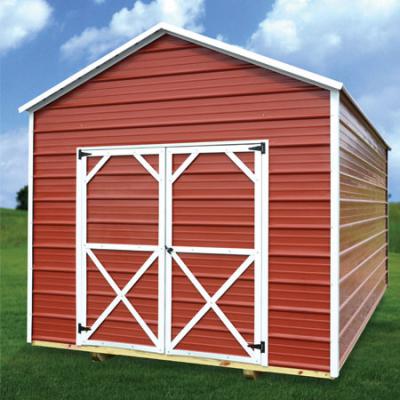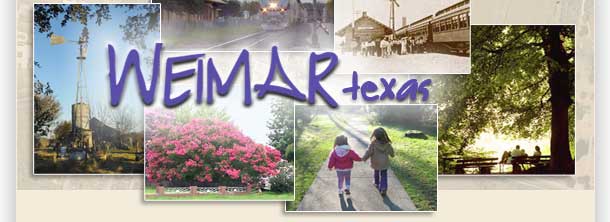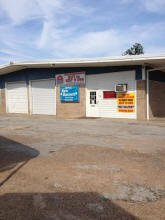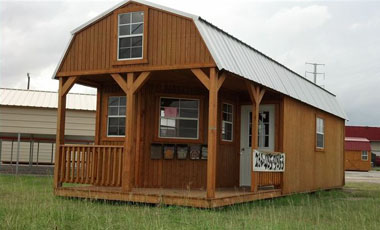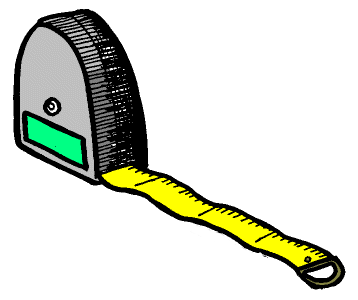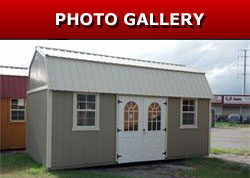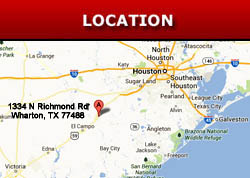
Weimar, Texas Chamber of
Commerce
Weimar History
The community was first
called Jackson, after
D.W. Jackson, a native
Georgian and area
landowner who donated
land for the railroad
right-of-way and the
town site. The populace
subsequently chose the
name Weimar and early
records indicate that
Thomas W. Pierce, who
authorized Jackson to
sell lots at the site,
had visited Weimar,
Germany, and was
favorably impressed.
Incorporated in July,
1875, it became an early
cotton center. Today the
city is still an
agriculture production
center as well as a
modern business
community.
Weimar Post Office
The Weimar Post Office
was established in 1873.
The town was
incorporated in 1875.
After beginning with a
few hundred townspeople,
Weimar had by its tenth
birthday achieved a
population of over
1,000. As it grew Weimar
established itself as a
center of trade for
pecans, poultry and
dairy products. By 1877
the town was large
enough to make its first
city map.
Weimar Mercury -
Historic Newspaper
In
1888 Weimar witnessed
the origin of its
historic newspaper, the
Weimar Mercury, which
remains in publication
today. Throughout the
twentieth century Weimar
enjoyed a slow yet
steady growth in
population, increasing
by over 250 every ten
years. Business
establishments held
their number steady at
around seventy. After a
population high of 2,400
in 1976, the town
declined slightly in the
following decade. In
2002 the population
hovers around 2,100
folks.
Weimar Water Tower
Before wireless
communication, cell
phones, and email, the
Weimar Welcomes You
water tower played a
very important roll for
emergency communication.
Back when you had to
pick up your phone and
ask an operator connect
you to the person you
wished to speak with,
contacting the
authorities could be a
difficult task. The
Sheriff was usually out
'keeping the peace' and
there was no quick way
to get in touch with
him. So the community
devised an emergency
communication system.
In
the event of an
emergency, you would
contact the operator and
let her know that you
needed assistance. She
would then flip the main
switch that controlled a
light, located on the
bottom of the water
tower, which was visible
for miles around. The
Sheriff would either see
the light or be notified
that there was an
emergency, and would
call the operator to
find out what the
problem was.
Heritage Society Museum
of Weimar
No
Admission Fee
Group tours available
Hours:
Wednesdays 2pm-4pm
Saturdays 10am-4pm
Old Hill Bank Building
125 E Main St
Weimar, TX 78962
Information Call:
(979) 725-8203
(979) 725-8804
(979) 725-8478
(979) 725-9511
Free:(888) 3-WEIMAR
Housed in the Old Hill
Bank building. The
Heritage Society Museum
of Weimar, Inc. focuses
on exhibits tracing the
city's history,
beginning with the
original land grant from
the Spanish government
to Henry Austin in 1831.
Surveying tools and
personal effects of
Weimar's founder, D.W.
Jackson, are displayed.
The Main Street area
gives a fascination
glimpse of life into
Weimar's early days.
Strolling down "the
street," visitors can
view a doctor's office
with a full-size
skeleton on a stand
beside an old-fashioned
examining table. Clearly
in view is an amputation
kit and a wooden leg
belonging to Peg-Leg
Strunk, an early area
rancher.
A
dentist office,
department store, bank,
blacksmith forge, a
facsimile of the old
Mercury newspaper
printing shop, a barber
ship and beauty salon
all make up the museum's
Main Street.
The early country
kitchen exhibit is
complete with a Hoosier
cabinet, the pride of
any 1900's housewife.
First manufactured in
Indiana, these cabinets
took their name from the
Hoosier state. A
poppy-seed grinder is
clamped to the
worktable, ready for
making poppy-seed filled
Kolaches.
Photographs of the
people who created
Weimar's history fill
the museum's walls.
Pictures include wedding
couples, children at
play, farmers at work,
and buddies cooling off
at a local saloon on a
hot Texas day.
Treasured keepsakes of
the area families share
space with souvenir
artifacts from Weimar's
commercial past. Old
ledgers and hand
cancellations in the
Hill Bank exhibit show
how financial
institutions once
operated. (A nearby
three-ton black iron
safe is ornamented in
elaborate gold
filigree.) Don't think
the flapper-style
evening gown in the bank
room is out of place. It
belonged to Pearl Hill
Kindred, the first woman
bank officer in Texas.
The Military Room
features uniforms and
G.I. memorabilia from
World War I, World War
II, the Korean War, the
Vietnam War, and the
Persian Gulf conflict.
Among the most unusual
items is a water-cooled
machine gun from W.W. I
and Nazi banners from
W.W.II. There's even a
Civil War cannonball,
recently unearthed east
of town. The Military
Room's exterior wall
holds the Weimar's
Veteran Roll, which
lists area residents who
have served in the
United States Armed
Forces.
The pharmacy exhibit is
most impressive. An
inlaid majolica tile
soda fountain from the
old Farmer's Drug Store
greets visitors to this
section. One can easily
imagine enjoying a
long-ago Saturday
afternoon with a cool
fountain drink or scoop
of ice cream.
Pharmaceutical items,
housed in original drug
store cabinets and
cases, include remedies
and patent medicines
such as Doctor
Thatcher's Liver and
Blood Syrup and
Grandma's Household
Remedies. A vast
collection of mortars
and pestles,
pharmaceutical tools,
bottles, and books line
the walls.
Prohibition-era
prescriptions for
alcohol, written in 1924
for a man and his wife
prompt comments about
"medicinal uses" of
spirits. Both scripts
carry the same date.
Perhaps the couple was
giving a party that
evening?
The museum takes pride
in its preservation of
Weimar's past. Among its
holdings is an extensive
collection of old Weimar
school yearbooks and
many photos of the
community's early
baseball teams.
At
one time, the majority
of area citizens made
their living in
agriculture. One of the
early cotton-seed oil
mills in Texas existed
in Weimar (1876).
In
1926, when the Texas
Pickle Company opened,
farmers began planting
cucumbers to supply the
brining vats. The
factory operated for
thirty years.
Displayed in the museum
are such items as a
bathtub-sized copper
kettle used in
commercial pickle
producing and a manual
hay press (circa 1900).
This valuable modern
piece of equipment (in
its day) was shared by a
group of farmers.
The newest addition to
the Heritage Society
Museum is the Weimar
Volunteer Firefighter's
exhibit, which houses a
vintage Seagrave pumper
and hose truck, 1890
house cart, uniforms and
photographs.
The museum annex,
located on Post Office
Street, houses the
"Rural Americana"
exhibit. Against a
country scene back drop,
visitors can view
examples of typical farm
implements known to have
come from area farmers.


